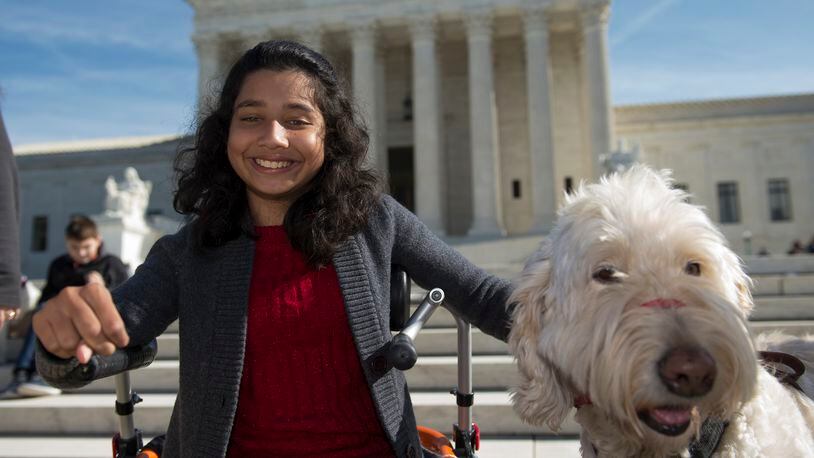The district initially refused to allow Wonder at school and insisted an adult aide could provide Fry needed help. Officials later relented, but restrictions placed on the dog caused the parents to school Ehlena at home.
The Michigan school district argued that the Individuals with Disabilities Education Act allowed it to bar the dog in favor of the aide. That law required the family to first contest school decisions through administrative proceedings, which school officials argued are easier and less costly at resolving educational disputes.
Trained in Xenia: Wonder was trained in Xenia at 4 Paws for Agility. Ehlena was 5 when she received Wonder, according to Karen Shirk, founder at 4 Paws for Ability. Of the more than 1,000 service dogs the non-profit has placed, about 60 percent have accompanied children to school, Shirk said.
Oral arguments: Ehlena and her family were at the Supreme Court in November to watch the arguments, but Wonder had to wait on the steps outside the courthouse because he no longer works as a service dog.
Unanimous decision: The justices found unanimously that federal disability laws might allow Ehlena to seek resolution in the courts rather than through a long administrative process, which the school argued.
Win for disabled: The ruling is a win for advocacy groups that want to make it easier for disabled students to protect their rights under the Americans with Disabilities Act.
About the Author
